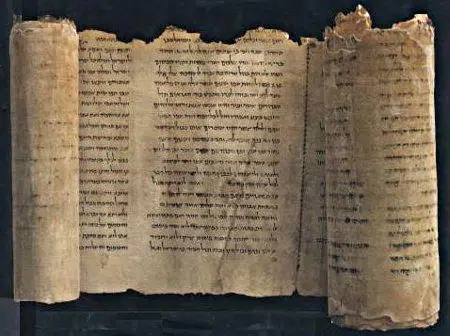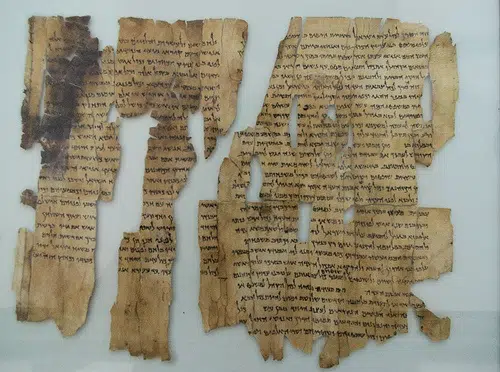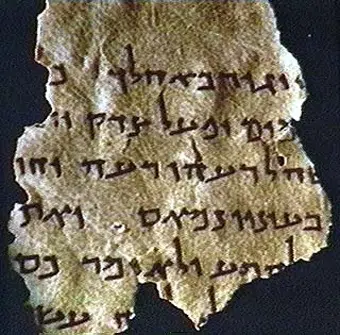The Mystery of the Dead Sea Scrolls
Several bodies of water around the world have often provided archaeological evidence helping human beings to understand their own past. While the evidence of human interactions with water bodies, especially rivers and oceans, have opened doors for divergent histories, mostly the proofs of human settlement along them have captured the attention of historians and archaeologists more. The civilisations that had emerged close to rivers and ocean frontiers have offered enough evidence to understand the social evolution of human beings.
Unsurprisingly, sometimes, such historical narratives have become stranger than fiction. And, no matter how hard we try to comprehend the entirety of reality, the more intriguing it seems to get. Discovery of scrolls of the Dead Sea in the mid 20th century in the caves along the northwest shore of the Dead Sea, which is now known as the West Bank, is a living proof of that.
What are the Dead Sea scrolls?
The Dead Sea scrolls are manuscripts found in the caves, also known as Qumran Caves, which are located in the modern Israel. Based on the content of these scrolls, they have been divided into two classes- biblical and non-biblical texts. Biblical texts of the Dead Sea scrolls contain fragments of prophecies by Ezekiel, Jeremiah and Daniel along with important statements like the last words of Judah, Joseph, Levi, Naphtali and Amram. Some of the text included in these scrolls were written about 1000 years before the Old Testament, making it the oldest group of text related to the Old Testament. Most of the things mentioned in these scrolls are not even found in the New Testament, adding to its mystery.
They are believed to have been written somewhere between 150 BC and 68 AD. Most of these scrolls are written in Hebrew along with Aramaic, which was the common language of the Jews of Palestine in the earlier period, from right to left and mainly without any punctuation marks. Papyrus is the main writing base, although some scrolls are also written on parchment and one on copper as well.
Where were the Dead Sea scrolls discovered?
Known as the greatest archaeological find of the 20th century, the Dead Sea scrolls were first discovered in 1947 and the last bits of which having been found up to 1956. These scrolls were discovered from eleven caves, among the thousands that can be found all along the coast, in an area which is 13 miles east of Jerusalem and near the site of Qumran. These scrolls were reportedly found stacked inside clay jars by Bedouin shepherds who were incidentally looking for their lost goats.
While looking for their goats, the young shepherds happened to toss a rock into an opening on the side of a cliff and were astonished to witness a shattering sound, resulting in the finding of the caves as well as the scrolls.
News of the discovery of the Dead Sea scrolls attracted archaeologists into the caves, where they unearthed tens of thousands of scroll fragments, which represent between 800 and 900 manuscripts, with the help of shepherds. In total, about 825 to 870 scrolls have been discovered over the entire span of over a decade, some being more complete texts while others being mere pieces of parchment. Among those historians and archaeologists who put efforts to understand the history behind these scrolls, American Biblical scholar and archaeologist John C. Trever is a prominent one. John C. Trever, the first American scholar to see remnants of larger manuscripts initially, reconstructed the story of the scrolls with the help of several interviews with the Bedouin. In addition, Trever has also authored two books named “The Untold Story of Qumran” and “The Dead Sea Scrolls: A Personal Account” after his engagements with the Qumran Caves and the Dead Sea Scrolls.
Mystery of the Dead Sea Scrolls
The mystery of the scrolls of the Dead Sea is fascinating because of their content, their nature and place of discovery and the fact as to how they withstood the effect of time over all these years. Since the discovery of the first set of scrolls, there has been much debate about the hands behind the Dead Sea Scrolls among historians and archaeologists. The scholarly debates over these scrolls have resulted in many theories that suggested different narratives claiming the origin of the scrolls. However, through extensive research, a group of archaeologists had come close to their source of origin which places them with the Essenes, a breakaway Jewish sect, who are believed to have hastily hidden them in these caves while fleeing the incoming Roman armies. Archeologists proposed that the scrolls appear to be the library of a Jewish sect and it was hidden away in caves. Following this hypothesis, theories including Qumran–Sectarian, Qumran–Sadducean, Christian origin and Jerusalem origin suggested narratives with significant changes to the Qumran–Essene theory.
However, some of the recent studies have suggested that the Dead Sea Scrolls had not originated at the shore of the Dead Sea and in fact, those were written by multiple Jewish groups. A recent discovery, announced this year, proposed another narrative saying the scrolls found in the caves were stolen. The study conducted by the Israel and the US archaeologists claimed that they have found 12th Dead Sea Scrolls cave and evidence such as a piece of parchment that was being processed for writing to suggest that the scrolls found were stolen ones.
As the scholarly debates over the origin of the Dead Sea Scrolls strengthen with new discoveries in every decade, a final answer to the great biblical mysteries remain awaited.
Other interesting facts about the Dead Sea Scrolls
In addition to the fact that the Dead Sea Scrolls were an exciting archaeology discovery, many details related to the scrolls also have received the attention of both the scholars and others. Since the non-biblical writings in the scrolls are more concerned with laws and rules of that time and wartime, the content of the scrolls has also been studied by scholars other than historians and archaeologists. There are nonbiblical writings also included mentions to thanksgiving psalms, liturgical text hymnic compositions and benedictions, among others.
Among all the caves where they found these scrolls, only Caves one and eleven contained relatively intact manuscripts. Moreover, one of the most curious scrolls among those is the Copper Scroll, which was discovered from Cave 3. According to archaeological documents, this copper scroll has a guide to a hidden treasure on it. The ancient treasure map engraved on the scroll offers a list of 64 underground hiding places throughout the land of Israel. And, the longest scroll found, with an overall length of about 28 feet, was the Temple Scroll, which was discovered from Cave 11.
In 1954, the Wall Street Journal had published an advertisement for the sale of four Dead Sea Scrolls, saying this would be an ideal gift to an educational or religious institution. Later, most of the scrolls were unpublished and were inaccessible till 1991, when the authorities granted general access to photographs of the Scrolls. Since then, most of this text has been translated to reveal information, and it has crucially changed the way we perceive some major events of the world. However, many parts of these texts still remain incomprehensible. The secrets possessed in those words remain a mystery along with the fact that these vulnerable papyrus scrolls survived all these years. At present, these scrolls Dead Sea can be found in the Shrine of the Books museum in Jerusalem.
You may also like to read – What are the Creepy “Dead Zones” of the Oceans?
Disclaimer: The authors’ views expressed in this article do not necessarily reflect the views of Marine Insight. Data and charts, if used, in the article have been sourced from available information and have not been authenticated by any statutory authority. The author and Marine Insight do not claim it to be accurate nor accept any responsibility for the same. The views constitute only the opinions and do not constitute any guidelines or recommendation on any course of action to be followed by the reader.
The article or images cannot be reproduced, copied, shared or used in any form without the permission of the author and Marine Insight.
Do you have info to share with us ? Suggest a correction
Subscribe To Our Newsletters
By subscribing, you agree to our Privacy Policy and may receive occasional deal communications; you can unsubscribe anytime.






